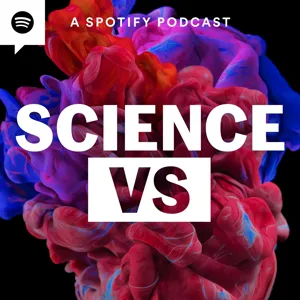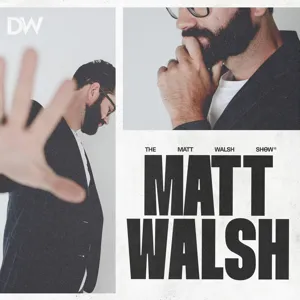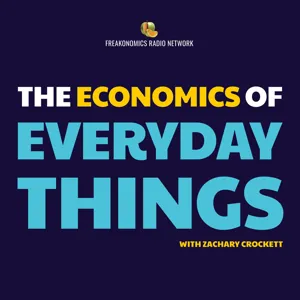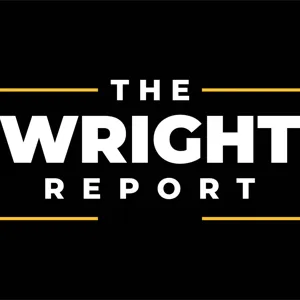Podcast Summary
Separating Fact from Fiction in Fracking Debate: Despite the hyperbole, most fracking issues stem from drilling process, not fracking itself. It's crucial to separate fact from fiction and understand safe fracking practices.
The debate surrounding fracking is filled with hyperbole and misconceptions from both sides. Fracking, or hydraulic fracturing, is a process used to extract natural gas from shale formations. The anti-fracking activists often use dramatic language and anecdotes to claim that fracking is causing widespread health and environmental problems. However, according to Doug Keppler, the vice president of environmental engineering at Seneca Resources, most issues related to fracking are actually caused by the drilling process, not the fracking itself. On the other hand, pro-fracking supporters can also be misleading by conflating the entire process of extracting and transporting natural gas with the fracking process itself. It's essential to separate fact from fiction and understand that fracking, when done correctly, is not inherently dangerous. For those interested in learning more about various scientific fields, Allie Ward's podcast, Ologies, is a great resource for exploring different areas of knowledge in an engaging and informative way.
Fracking risks to drinking water: Despite the depth at which fracking is usually carried out, there's still a risk of contaminating drinking water through leaks in pipes and shallower operations. Ongoing research and regulation are crucial to minimize these risks.
While fracking, the process of cracking rocks to extract natural gas, itself is a relatively safe process when it comes to contaminating drinking water due to the depth at which it is typically carried out, there are still risks associated with the process. These risks include the potential for chemicals to leak into water supplies through cracks in pipes, and the higher risk of contamination in areas where fracking is carried out at shallower depths, such as in Australia. Additionally, 6% of fracking wells in the United States have experienced some kind of pipe issue. Overall, while the risks of contamination are relatively low, they do exist, and ongoing research and regulation are necessary to minimize these risks and address any issues that may arise.
Fracking Wastewater: Risks for Contamination: While fracking can contaminate drinking water infrequently, the consequences can be severe when it does happen, making proper handling of wastewater a crucial aspect of the fracking debate.
While the natural gas industry produces large quantities of wastewater during the fracking process, the storage and transportation of this wastewater pose significant risks for contamination. This water, which contains fracking chemicals and other impurities, can leak from tanks or pits, leading to potential groundwater contamination. However, the frequency of these incidents is a subject of debate among experts. Robert Jackson, a leading researcher in the field, acknowledges that while fracking can contaminate drinking water, it does so relatively infrequently. Nevertheless, when it does happen, the consequences can be severe and cause understandable concern. The industry's handling of wastewater remains an important issue in the ongoing fracking debate.
Uncertainty in the number of fracking spills: Despite EPA reports, the actual number of fracking spills is unknown due to lack of baseline data and company transparency.
The number of fracking spills in the United States each year is uncertain due to a lack of baseline data and difficulty in getting companies to acknowledge spills. The EPA reported between 100 to 3,700 spills annually, but the actual number is unknown. An example was given of Seneca, a fracking company, denying responsibility for contaminating water supplies despite evidence to the contrary in the form of letters from environmental departments. These letters confirmed contamination incidents but did not necessarily mean Seneca was the polluter. Many of these incidents were surface spills unrelated to the fracking process itself. This highlights the importance of independent baseline data and transparency from fracking companies to accurately assess the environmental impact of the industry.
Fracking incidents causing water contamination are rare but have potential health risks: Though rare, fracking incidents leading to water contamination can pose health risks, with ongoing research debating the specific hazards of fracking chemical exposure
While fracking chemicals can contaminate drinking water due to leaks or spills, such incidents are relatively rare. However, when they do occur, there is a concern about potential health risks. For instance, methane, a main ingredient in natural gas, can make water flammable, but it is not considered a health hazard according to the Centers for Disease Control and Prevention. Regulations on fracking have become stricter over the years to prevent such incidents, and sites now have multiple layers of containment to prevent leaks. However, the potential health risks of exposure to fracking chemicals are still a topic of ongoing research and debate.
Fracking chemicals may pose health concerns despite quick dissipation of methane: Studies suggest that diluted fracking chemicals may not harm cells, but chronic exposure could be a concern. Living near fracking sites may cause skin problems and upper respiratory complaints, but the correlation does not definitively prove causation.
While methane in water from fracking sites may not pose an immediate risk due to its quick dissipation, the chemicals used in fracking operations can be toxic when ingested. However, the water is typically diluted for consumption, making it safer. A study by Australian researchers found that diluted fracking chemicals did not harm cells, but chronic exposure could be a concern. Researcher Peter Rabinowitz conducted a survey of people living near fracking sites and found no link between living near a fracking site and reported heart, brain, or stomach problems. However, he did find a correlation between living near a fracking site and reported skin problems and upper respiratory complaints. It's important to note that this correlation does not definitively prove that fracking chemicals caused these issues, as it could be due to the placebo effect or other factors. PETA also suggests that the rapid pace of fracking and lack of information may contribute to the placebo effect, causing people to believe they are being harmed and leading to stress and anxiety, which could bring on symptoms. Therefore, further research is needed to definitively determine the health effects of fracking.
Pets and Fracking: No Evidence of Higher Rates of Sickness: While no definitive evidence links pets and their owners to higher rates of sickness near fracking sites, there is a potential concern for skin problems in dogs living closer to wells. Wastewater disposal from fracking operations can trigger earthquakes in certain areas.
While there is ongoing research regarding the potential health effects of living near fracking wells, current evidence suggests that pets and their owners do not show higher rates of sickness compared to those living further away. However, a potential concern is the increased likelihood of skin problems in dogs residing closer to fracking sites. Further investigation is necessary to confirm these findings. Additionally, the disposal of wastewater from fracking operations has been linked to an increase in earthquakes in certain areas, particularly in the US, such as Texas, Colorado, Oklahoma, and Arkansas. This is due to the high-pressure injection of wastewater back into deep injection wells, which can cause rock layers to slip and result in earthquakes.
Natural Gas's Impact on Climate: A Contentious Issue: Natural gas from fracking has lower carbon emissions but high methane leakage, making its climate impact uncertain and a subject of debate among scientists
While natural gas from fracking has lower carbon dioxide emissions when burned compared to coal, its main component, methane, is a potent greenhouse gas. Fugitive methane emissions from fracking processes are difficult to quantify, but if significant, could make natural gas worse for the climate than coal. The Intergovernmental Panel on Climate Change initially considered natural gas a transition fuel, but as more data on methane leaks has emerged, they've become less optimistic. However, not all scientists agree that methane leaks negate natural gas's potential benefits. The exact extent of methane leakage and its impact on the climate remains a contentious issue.
Understanding the Complexities of Natural Gas: Natural gas is a cleaner alternative to coal but has environmental concerns. The transition to renewable energy is the best long-term solution, but acknowledging the benefits and drawbacks of natural gas is crucial.
While natural gas is a cleaner alternative to coal, it is not without its environmental concerns. Renewable energy sources remain the best option for reducing pollution and mitigating climate change. The fears surrounding fracking, such as water contamination, health risks, earthquakes, and climate destruction, do exist but are not as widespread as some may believe. The evidence suggests that natural gas is better than coal but worse than renewables. However, the science on many of these fears is uncertain, and the industry's impact on communities raises valid concerns. It is essential to approach the discussion on fracking with a nuanced understanding, recognizing both its benefits and drawbacks. Ultimately, the goal should be to transition to cleaner, renewable energy sources while minimizing the negative impacts of fossil fuel extraction.
The Complexities of Science versus Fracking: A YouTube video of a river on fire might seem like a clear-cut case against fracking, but the Science Versus podcast explores the scientific complexities and nuances behind the issue.
While strong opinions are common in social settings like the pub, when it comes to complex issues like science versus fracking, there's often more to the story than meets the eye. For a striking example, consider the YouTube video of a river on fire, which may seem like a clear-cut case against fracking. However, the full story involves scientific complexities and nuances that require careful consideration. The Science Versus podcast, produced by Caitlin Kenny, Heather Rogers, Caitlin Sorey, and edited by Annie Rose Strasser and Alex Bloomberg, among others, aims to provide in-depth exploration of such issues. In the next episode, they will tackle attachment parenting, where the belief that babies should be kept close to their mothers for the first few months can raise questions about the use of tools like strollers. As always, thank you to the Gimlet hive mind for feedback and support, and stay tuned for more thought-provoking discussions on Science Versus.






